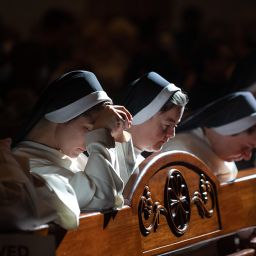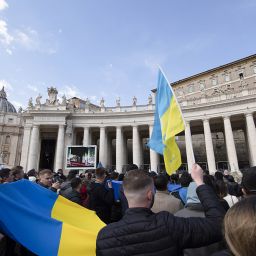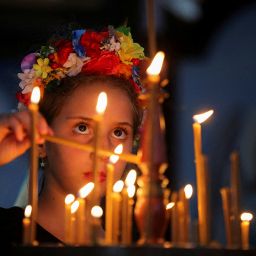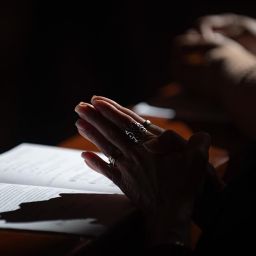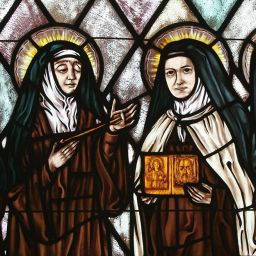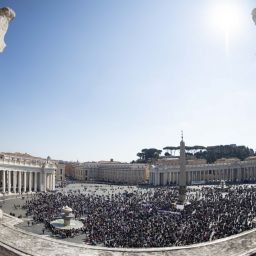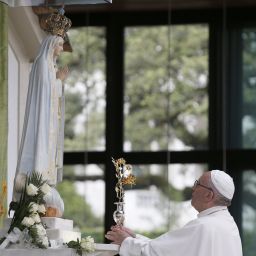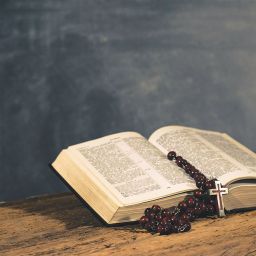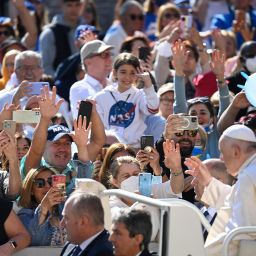By Maria Wiering
OSV News
In Pope Leo XIV’s first greeting after being introduced as pope May 8, he described himself as a “son of St. Augustine.”
The first American pope has spoken in the past with affection about the fifth-century convert, bishop, and intellectual powerhouse considered the father of his religious order, the Order of St. Augustine. Although their order was founded more than 800 years after Augustine’s death, the Augustinians draw on his wisdom and holiness to shape their community.
In the early 13th century, loosely organized communities of hermits living in Italy’s Tuscany region sought direction from Pope Innocent IV — known to be an excellent canonist, or Church law scholar — to help them adopt a common rule of life to live with greater uniformity.
They were inspired, in part, by the recent formation of other new religious orders, including the Franciscans in 1209 and the Order of Preachers, also known as the Dominicans, in 1216. Both were mendicant orders, which meant they relied on begging and working for their sustenance, and unlike the long-established Benedictines and other monks, they did not vow stability, meaning they were not bound to a single monastery for life.
Pope Innocent advised the Tuscan hermits to organize under the rule of St. Augustine, a guide for religious life the saint had developed around the year 400. It covered the breadth of religious life, including purpose and basis of common life, prayer, moderation, and self-denial, safeguarding chastity and fraternal correction, and governance and obedience.
Written initially as a letter for a community of religious women in Hippo, the diocese in modern-day Algeria that St. Augustine led, the rule made its way to Europe and influenced St. Benedict, who formed the Benedictines in Italy in 529.
The rule of St. Augustine had also informed the Dominicans, but when the Tuscan hermits adopted the rule, they also took the name and spiritual fatherhood of its author. Over time, they transitioned from an eremitical way of life to the mendicant model expressed by other medieval orders, which is why they are known as “friars.” Women’s religious communities also joined the Augustinians, producing saints including St. Clare of Montefalco and St. Rita of Cascia. Male Augustinian saints include St. John of Sahagún, an early Augustinian from Spain, and St. Nicholas of Tolentine, who was the first Augustinian to be canonized after the order’s “grand union” in 1256.
Today the Order of St. Augustine is an international religious community that includes more than 2,800 members in nearly 50 countries, including the United States, where they are organized into three provinces, or geographical areas. Lay men and women also affiliate themselves with the Augustinians and the order’s spirituality and support the order’s work.
Augustinians in the U.S. have a strong reputation for education and founded Villanova University near Philadelphia and Merrimack College in North Andover, Massachusetts, and high schools in California, Illinois, Massachusetts, Michigan, Oklahoma, Ontario, and Pennsylvania. They also care for several parishes and have missions in Japan and Peru.
Contemporary Augustinians describe themselves as “active contemplatives” with varied ministries who are “called to restlessness” — a nod to St. Augustine’s famous description of himself in his influential autobiography, “Confessions”: “You have made us for yourself, O Lord, and our hearts are restless until they rest in You.”
The U.S. Augustinians’ vocations website describes this restlessness as “a divine gift” that they “believe … can direct us to God.”
Despite the order’s 800-year history — and its Italian origins — Pope Leo XIV is the first Augustinian to be named a pope.
A Chicago native, Pope Leo attended an Augustinian high school seminary, since closed, near Holland, Michigan, and then Villanova University, where he majored in math, before entering the Augustinian novitiate in St. Louis in 1977. He professed first vows in 1978 and final vows in 1981. He was ordained a priest the following year.
His ministries as a young priest included missionary work in Peru and seminary formation before he became provincial of his order’s Chicago-based Midwest province, Our Mother of Good Counsel, and then his order’s worldwide leader, a role he held for two, six-year terms.
Augustinians worldwide met the news of an Augustianian bishop with joy. The head of the Midwestern Augustinian province, Prior Provincial Father Anthony B. Pizzo, said May 8 that the community celebrated the news of Pope Leo’s election and it was “honored that he is one of our own, a brother formed in the restless heart of the Augustinian Order.”
“We see him as a bridge-builder, rooted in the spirit of St. Augustine, walking forward with the whole Church as a companion on the journey,” he said.
After identifying himself as an Augustinian on St. Peter’s loggia May 8, Pope Leo quoted St. Augustine: “For you I am a bishop; with you, I am a Christian.”
“In this sense we can all walk together toward that homeland that God has prepared,” he said.
Cutline for featured image: Pope Leo XIV leads his first Mass as pontiff in the Sistine Chapel at the Vatican May 9, 2025. Pope Leo, formerly Cardinal Robert Francis Prevost, became the first American pope in history with his election the previous day. (OSV News photo/Mario Tomassetti, Vatican media via Reuters)

